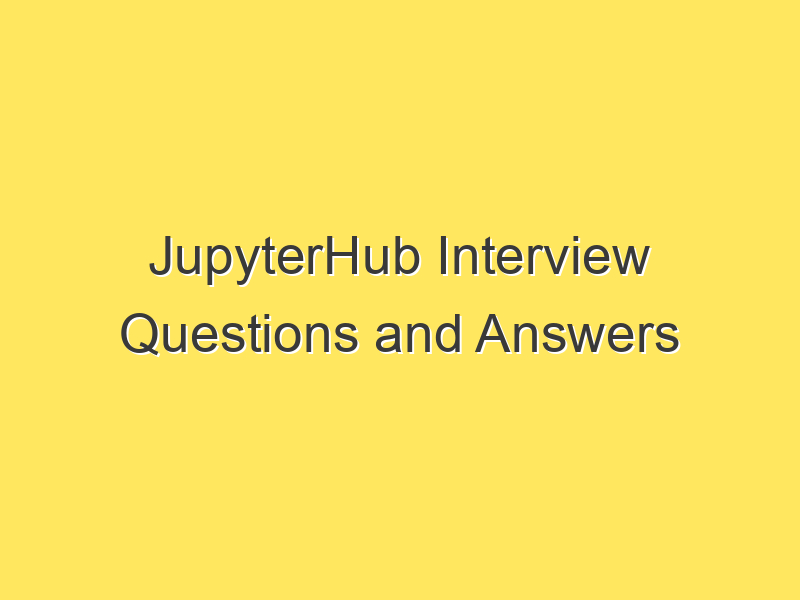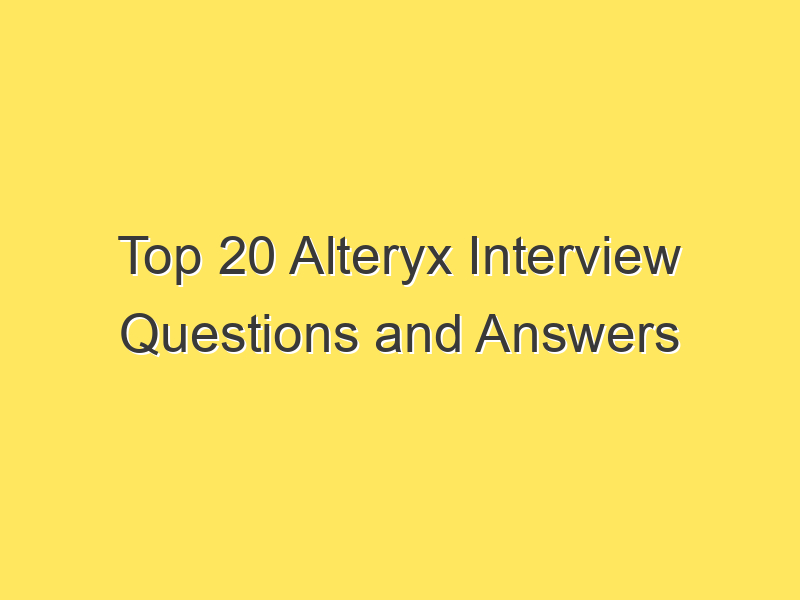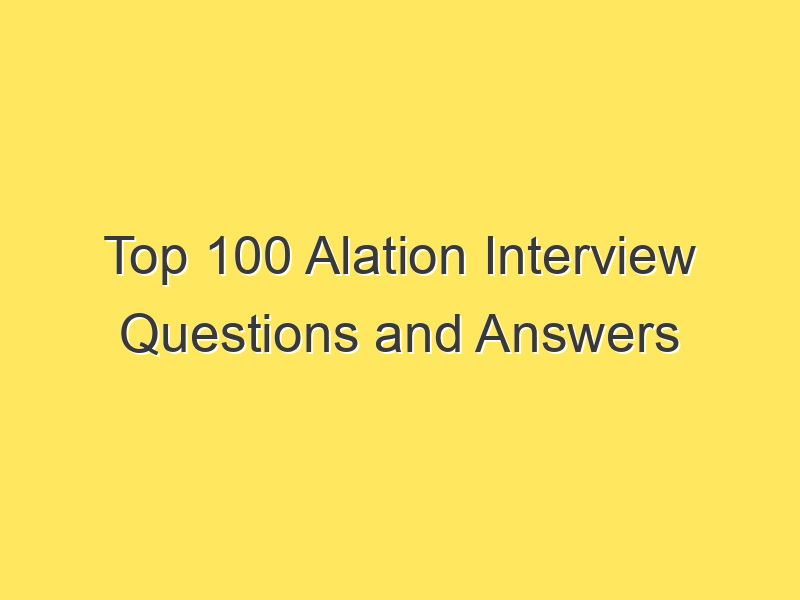Top 100+ DevOps Interview Questions and Answers for 2023 :
DevOps is a set of practices that combines software development (Dev) and IT operations (Ops) to shorten the software development lifecycle, enable faster delivery, and improve quality. DevOps professionals are in high demand due to their critical role in modern software development. Whether you are an interviewer looking to assess a candidate’s DevOps knowledge or a candidate preparing for a DevOps interview, this list of Top 100+ DevOps interview questions and answers can be a valuable resource.
Post Contents

Basic DevOps Concepts
- What is DevOps?
- Answer: DevOps is a set of practices that focuses on collaboration and communication between software development and IT operations teams, aiming to automate and streamline the software delivery and infrastructure management processes.
- What are the key principles of DevOps?
- Answer: The key principles of DevOps are collaboration, automation, measurement, and sharing (CAMS).
- Explain the DevOps lifecycle.
- Answer: The DevOps lifecycle includes planning, coding, building, testing, releasing, deploying, operating, and monitoring.
- What are the benefits of DevOps?
- Answer: Benefits include faster release cycles, reduced manual interventions, improved collaboration, higher quality, and better customer satisfaction.
- What is Continuous Integration (CI)?
- Answer: CI is a practice where code changes are automatically integrated into a shared repository multiple times a day, followed by automated testing.
- What is Continuous Deployment (CD)?
- Answer: CD is a practice where every code change that passes automated tests is automatically deployed to production.
- Explain Infrastructure as Code (IaC).
- Answer: IaC is the practice of managing infrastructure using code and automation tools, ensuring consistency and repeatability.
- What is a Jenkins pipeline?
- Answer: A Jenkins pipeline is a set of automated steps to define, build, test, and deploy applications, enabling continuous delivery.
- What is GitOps?
- Answer: GitOps is a DevOps approach where infrastructure and application configurations are stored in a Git repository, and changes are automatically applied through Git operations.
- What is the “Immutable Infrastructure” concept?
- Answer: Immutable infrastructure refers to the practice of replacing servers or infrastructure components rather than making changes to existing ones, ensuring consistency and predictability.
Subscribe to our YouTube Channel
Source Code Management
- What is Git, and how is it used in DevOps?
- Answer: Git is a distributed version control system used to track changes in source code. In DevOps, Git is essential for versioning and collaborative development.
- Explain the difference between Git and SVN.
- Answer: Git is distributed, while SVN is centralized. Git allows for offline work, branching, and lightweight local repositories.
- What is a Git repository, and how do you create one?
- Answer: A Git repository is a storage location for source code and project history. You can create one using
git initor by cloning an existing repository usinggit clone.
- Answer: A Git repository is a storage location for source code and project history. You can create one using
- What is a Git branch, and why are they used?
- Answer: A Git branch is a separate line of development in a Git repository. They are used to work on features or bug fixes independently.
- What is a Git merge, and how does it work?
- Answer: A Git merge combines changes from one branch into another. It creates a new commit that integrates the changes from the source branch into the target branch.
- Explain a Git rebase.
- Answer: A Git rebase is used to move or combine a sequence of commits from one branch to another, resulting in a linear commit history.
- What is a Git conflict, and how do you resolve it?
- Answer: A Git conflict occurs when two branches have made conflicting changes to the same file. It’s resolved by manually editing the file to resolve conflicts and then committing the resolved changes.
- What is Git’s “pull” operation?
- Answer: Git pull is used to fetch changes from a remote repository and merge them into the current branch. It combines
git fetchandgit merge.
- Answer: Git pull is used to fetch changes from a remote repository and merge them into the current branch. It combines
- What is Git’s “fetch” operation?
- Answer: Git fetch is used to retrieve changes from a remote repository without merging them. It updates the remote tracking branches.
- What is Git’s “push” operation?
- Answer: Git push is used to upload local changes to a remote repository. It updates the remote branches with your local changes.
Continuous Integration and Continuous Deployment (CI/CD)
- What is Continuous Integration (CI), and why is it important?
- Answer: CI is the practice of frequently integrating code changes into a shared repository and automatically running tests. It helps identify and address integration issues early.
- Name some popular CI/CD tools.
- Answer: Jenkins, Travis CI, CircleCI, GitLab CI/CD, and GitHub Actions are popular CI/CD tools.
- What is a Jenkins pipeline, and how do you define one?
- Answer: A Jenkins pipeline is a set of automated steps for defining and managing CI/CD workflows. It’s defined using a Jenkinsfile in code.
- What is a Jenkins agent or node?
- Answer: A Jenkins agent (or node) is a machine used to execute Jenkins jobs. Agents can be master nodes or distributed agents.
- What is Blue-Green Deployment?
- Answer: Blue-Green Deployment is a CI/CD technique where two identical environments (blue and green) are used. Traffic is switched from one environment to the other after a successful deployment, minimizing downtime.
- Explain Canary Deployment.
- Answer: Canary Deployment involves deploying a new version of an application to a subset of users or servers to test its performance and stability before rolling it out to all users or servers.
- What is a rolling deployment?
- Answer: A rolling deployment is a gradual deployment technique where a new version of an application is deployed to a subset of servers at a time until all servers are updated.
- What is a deployment pipeline in CI/CD?
- Answer: A deployment pipeline is a series of automated steps that code changes go through to be built, tested, and deployed to production.
- What is the purpose of a “smoke test” in CI/CD?
- Answer: A smoke test is a basic test that checks if an application can start successfully. It is often used to quickly identify critical issues in a deployment.
- What is a “fail fast” strategy in CI/CD?
- Answer: A “fail fast” strategy involves identifying and addressing issues as early as possible in the CI/CD pipeline to reduce the cost of fixing defects.
Containerization and Orchestration
- What is containerization, and why is it used in DevOps?
- Answer: Containerization is the practice of packaging applications and their dependencies into containers for consistent and portable deployment. It simplifies deployment and scaling.
- Explain Docker and its role in DevOps.
- Answer: Docker is a containerization platform used to create, deploy, and run containers. It facilitates consistent environments across development, testing, and production.
- What is a Docker image and a Docker container?
- Answer: A Docker image is a read-only template containing application code and dependencies. A Docker container is a running instance of a Docker image.
- What is Kubernetes, and why is it important in DevOps?
- Answer: Kubernetes is an open-source container orchestration platform used to automate the deployment, scaling, and management of containerized applications. It helps achieve container orchestration and manage complex microservices architectures.
- Explain Kubernetes pods and services.
- Answer: A Kubernetes pod is the smallest deployable unit and can contain one or more containers. A Kubernetes service is used to expose a set of pods as a network service.
- What is a Kubernetes deployment?
- Answer: A Kubernetes deployment is a resource object used to declare an application’s desired state, including the desired number of replicas, container images, and more.
- What is a Kubernetes namespace?
- Answer: A Kubernetes namespace is a logical way to partition and isolate resources within a cluster. It helps manage resources for different teams or projects.
- Explain the difference between a Kubernetes StatefulSet and a Deployment.
- Answer: A StatefulSet is used for stateful applications that require stable network identities and stable storage. A Deployment is suitable for stateless applications where scaling and rolling updates are important.
- What is container orchestration, and why is it necessary?
- Answer: Container orchestration is the automated management of containerized applications. It’s necessary to handle deployment, scaling, load balancing, and self-healing in complex container environments.
- What is Helm in Kubernetes?
- Answer: Helm is a package manager for Kubernetes that allows you to define, install, and manage Kubernetes applications.
Cloud Computing and Infrastructure as Code (IaC)
- What is cloud computing, and how does it relate to DevOps?
- Answer: Cloud computing is the delivery of computing services (e.g., servers, storage, databases) over the internet. DevOps often involves deploying and managing applications in cloud environments for scalability and flexibility.
- Explain the difference between IaaS, PaaS, and SaaS in cloud computing.
- Answer: IaaS (Infrastructure as a Service) provides virtualized computing resources. PaaS (Platform as a Service) offers a platform for developing and deploying applications. SaaS (Software as a Service) provides software applications over the internet.
- What is Terraform, and how is it used for IaC?
- Answer: Terraform is an open-source infrastructure as code tool used to define and provision infrastructure resources in a declarative manner.
- Explain the “desired state” in Terraform.
- Answer: The desired state in Terraform refers to the configuration defined in Terraform files that specify the infrastructure’s expected configuration.
- What are Terraform modules, and why are they used?
- Answer: Terraform modules are reusable, encapsulated configurations that allow you to define and provision infrastructure components. They promote code reuse and maintainability.
- What is AWS CloudFormation, and how is it used for IaC?
- Answer: AWS CloudFormation is a service that allows you to define and provision AWS infrastructure resources using templates. It’s Amazon’s native IaC tool.
- What is the difference between horizontal and vertical scaling?
- Answer: Horizontal scaling involves adding more instances (e.g., servers) to a system to handle increased load. Vertical scaling involves increasing the resources (e.g., CPU, memory) of existing instances.
- What is serverless computing, and how does it fit into DevOps?
- Answer: Serverless computing is a cloud computing model where the cloud provider manages the infrastructure, and developers focus on writing code. It can be used in DevOps for deploying and running event-driven applications.
- What is a microservices architecture?
- Answer: A microservices architecture is an architectural style where an application is composed of small, independent services that communicate via APIs. It promotes scalability and maintainability.
- Explain the concept of “infrastructure as cattle, not pets.”
- Answer: In DevOps, this concept means treating servers and infrastructure as disposable and easily replaceable, rather than unique and carefully maintained entities.
Monitoring and Logging
- Why is monitoring important in DevOps, and what are some key metrics to monitor?
- Answer: Monitoring is crucial for identifying issues, ensuring system reliability, and making informed decisions. Key metrics include response time, error rate, resource utilization, and more.
- What is observability, and how is it different from monitoring?
- Answer: Observability is the ability to understand the internal state of a system from its external outputs. It goes beyond monitoring by providing insights into system behavior.
- What is the ELK Stack (Elasticsearch, Logstash, Kibana), and how is it used for logging and monitoring?
- Answer: The ELK Stack is a set of tools used for centralized logging and log analysis. Elasticsearch stores logs, Logstash collects and processes logs, and Kibana provides a user interface for log visualization.
- What is Prometheus, and how does it work in monitoring?
- Answer: Prometheus is an open-source monitoring and alerting toolkit. It collects metrics from targets, stores them, and provides a query language for analysis and alerting.
- What are Docker logs, and how do you access them?
- Answer: Docker logs are the standard output and standard error streams generated by containers. You can access them using the
docker logscommand.
- Answer: Docker logs are the standard output and standard error streams generated by containers. You can access them using the
- What is the purpose of a “dashboard” in monitoring and logging?
- Answer: A dashboard provides a visual representation of key metrics and logs, allowing teams to quickly assess the health and performance of systems.
- What is APM (Application Performance Monitoring), and why is it important?
- Answer: APM tools monitor and analyze the performance of applications, helping identify bottlenecks and optimize code for better user experiences.
- Explain the concept of “alert fatigue” in monitoring.
- Answer: Alert fatigue occurs when there are too many alerts, many of which are false alarms. It can lead to ignoring critical alerts.
- What is the SLA (Service Level Agreement) in the context of monitoring?
- Answer: An SLA is a commitment between service providers and customers that defines the expected level of service, including uptime and response times.
- What is a “health check” in monitoring?
- Answer: A health check is a test or probe performed to verify the availability and proper functioning of a service or component.
Security and Compliance
- Why is security important in DevOps, and what are some common security challenges?
- Answer: Security is critical for protecting data and ensuring the integrity of applications. Common challenges include vulnerabilities, misconfigurations, and compliance requirements.
- What is “DevSecOps,” and how does it differ from traditional security practices?
- Answer: DevSecOps integrates security practices into the DevOps pipeline, emphasizing security from the start of development and throughout the delivery process.
- Explain the “Principle of Least Privilege” in security.
- Answer: The Principle of Least Privilege means granting users and processes the minimum level of access or permissions required to perform their tasks, reducing the potential for security breaches.
- What is a “security audit” in DevOps?
- Answer: A security audit is a comprehensive review of an organization’s security policies, procedures, and systems to identify vulnerabilities and ensure compliance.
- What is “vulnerability scanning,” and how is it used in DevOps?
- Answer: Vulnerability scanning involves identifying security vulnerabilities in software and infrastructure. It’s used in DevOps to detect and address vulnerabilities early in the development lifecycle.
- What are “security patches,” and why are they important?
- Answer: Security patches are updates or fixes applied to software or systems to address known vulnerabilities. They are crucial for keeping systems secure.
- What is “penetration testing,” and how does it improve security?
- Answer: Penetration testing simulates real-world attacks to identify vulnerabilities in applications and systems. It helps organizations proactively fix security weaknesses.
- Explain the concept of “security as code” in DevOps.
- Answer: Security as code involves defining security policies and configurations as code, allowing automated enforcement of security controls in the CI/CD pipeline.
- What is “compliance as code,” and how does it relate to DevOps?
- Answer: Compliance as code involves defining compliance requirements and checks as code, enabling automated validation and reporting during the development process.
- What is “identity and access management (IAM)” in the context of cloud security?
- Answer: IAM involves managing user identities and their access to resources in cloud environments, ensuring secure and controlled access.
Collaboration and Communication
- Why is collaboration important in DevOps, and how can it be facilitated?
- Answer: Collaboration fosters communication and teamwork among development and operations teams. It can be facilitated through shared tools, processes, and regular meetings.
- What is ChatOps, and how does it improve collaboration?
- Answer: ChatOps integrates chat platforms with DevOps tools, allowing teams to collaborate, make decisions, and execute actions in a chat interface.
- What are “stand-up meetings” in Agile and DevOps, and why are they held?
- Answer: Stand-up meetings are short daily meetings where team members share updates on progress, discuss challenges, and align on tasks. They improve communication and collaboration.
- What is a “post-mortem” or “blameless post-incident review” in DevOps?
- Answer: A post-mortem is a review conducted after an incident or outage to analyze the cause, impact, and lessons learned. It’s “blameless” to focus on improvements, not blame.
- Explain the concept of “ChatOps” and give examples of ChatOps tools.
- Answer: ChatOps integrates chat platforms (e.g., Slack, Microsoft Teams) with DevOps tools (e.g., Jenkins, Ansible) to streamline communication, collaboration, and automation.
- What is “Infrastructure as Chat” in ChatOps?
- Answer: Infrastructure as Chat allows teams to interact with and manage infrastructure resources through chat interfaces, such as deploying servers or checking server status via chat commands.
- What is the “Two-Pizza Rule,” and how does it relate to team size?
- Answer: The Two-Pizza Rule suggests that teams should be small enough that they can be fed with two pizzas. It emphasizes keeping teams small and agile for better collaboration.
- What is “Continuous Feedback” in DevOps, and why is it important?
- Answer: Continuous Feedback involves regularly gathering input from stakeholders, users, and team members to improve processes and software quality.
- What is “ChatOps as Documentation”?
- Answer: ChatOps as Documentation encourages using chat conversations and logs as a form of documentation, making it easier to find information and context.
- Explain the “bus factor” in team collaboration.
- Answer: The bus factor measures the risk to a project or team based on how many key members could be “hit by a bus” before the project is severely impacted. Higher bus factors indicate better team collaboration and knowledge sharing.
Scripting and Automation
- Why is scripting important in DevOps, and what are some scripting languages commonly used?
- Answer: Scripting automates repetitive tasks, making it crucial in DevOps. Common scripting languages include Bash, Python, Ruby, and PowerShell.
- What is a shell script, and how is it used for automation?
- Answer: A shell script is a script written for a command-line shell (e.g., Bash) to automate tasks, execute commands, and perform system operations.
- Explain the purpose of configuration management tools like Ansible, Puppet, and Chef.
- Answer: Configuration management tools automate the provisioning and configuration of servers and infrastructure, ensuring consistency and repeatability.
- What is Ansible, and how does it differ from other configuration management tools?
- Answer: Ansible is an open-source automation tool that uses a declarative language (YAML) to define configurations and automate tasks. It’s agentless and SSH-based.
- What is Puppet, and how does it work in automation?
- Answer: Puppet is a configuration management tool that uses a declarative language to define infrastructure configurations. Puppet agents apply the configurations to managed nodes.
- Explain the concept of “idempotence” in automation scripts.
- Answer: Idempotence means that running a script multiple times produces the same result as running it once. It ensures that automation tasks don’t have unintended side effects.
- What is infrastructure provisioning, and how is it automated in DevOps?
- Answer: Infrastructure provisioning involves creating and configuring servers and resources. It’s automated using tools like Terraform, Ansible, or cloud-specific services.
- What are “cron jobs” in automation?
- Answer: Cron jobs are scheduled tasks that run at specific times or intervals on Unix-like systems. They are commonly used for automation in DevOps.
- Explain the use of “if-else” conditions in automation scripts.
- Answer: “If-else” conditions in scripts allow you to make decisions based on specific criteria, executing different actions depending on the outcome.
- What is “script version control,” and why is it important?
- Answer: Script version control involves tracking changes to automation scripts using version control systems (e.g., Git). It ensures traceability and collaboration.
Problem-Solving and Troubleshooting
- What are some common challenges in troubleshooting DevOps environments?
- Answer: Common challenges include identifying root causes, dealing with complex distributed systems, and resolving issues quickly.
- Explain the “Five Whys” technique in problem-solving.
- Answer: The Five Whys involves asking “why” five times to dig deeper into the root cause of a problem. It helps uncover the underlying issues behind symptoms.
- What is “log analysis,” and how is it used in troubleshooting?
- Answer: Log analysis involves reviewing log files to identify errors, exceptions, and abnormal behavior. It’s crucial for diagnosing issues in DevOps environments.
- How do you approach debugging in a DevOps context?
- Answer: Debugging involves systematically identifying, isolating, and fixing issues in code, scripts, or infrastructure. A methodical approach with logs and testing is key.
- Explain the use of “monitoring and alerting” in identifying and addressing issues.
- Answer: Monitoring and alerting tools can notify teams of issues or anomalies in real-time, enabling rapid response and problem resolution.
- What is “incident management,” and how does it relate to troubleshooting?
- Answer: Incident management is the process of addressing and resolving incidents or outages. It involves communication, coordination, and troubleshooting.
- What is a “runbook” in DevOps, and why is it useful?
- Answer: A runbook is a documented set of procedures and best practices for handling incidents and routine operations. It provides a standardized approach to troubleshooting.
- Explain the concept of “escalation” in incident management.
- Answer: Escalation involves transferring an incident to higher-level support or management when it cannot be resolved at the current level. It ensures timely resolution.
- What is “root cause analysis (RCA)” in problem-solving?
- Answer: RCA is a systematic process of identifying the underlying cause of an issue or incident. It aims to prevent similar issues in the future.
- How do you handle “post-incident reviews” to improve processes? – Answer: Post-incident reviews involve analyzing incidents to understand their causes, impacts, and preventive measures. They help identify areas for improvement and prevent recurrences.
DevOps Interview Questions and Answers for 2023 Conclusion
DevOps is a dynamic and evolving field that requires a diverse skill set, encompassing development, operations, automation, collaboration, and security. These 100 DevOps interview questions and answers cover a wide range of topics, helping both interviewers and candidates assess and prepare for DevOps interviews. As DevOps practices continue to shape modern software development, staying informed and skilled in these areas is essential for success in the field.
DevOps Job Role FAQs
- What is a DevOps engineer, and what do they do?
- Answer: A DevOps engineer is responsible for bridging the gap between development and IT operations by automating and optimizing the software development and deployment process. They manage infrastructure as code, ensure continuous integration and delivery, and enhance collaboration between teams.
- What skills and qualifications are required for a DevOps role?
- Answer: DevOps engineers typically need a strong understanding of software development, scripting, automation, and system administration. They often have backgrounds in fields like computer science or IT, and they may hold certifications such as AWS Certified DevOps Engineer or Certified Kubernetes Administrator (CKA).
- What are the key responsibilities of a DevOps engineer?
- Answer: DevOps engineers are responsible for tasks like configuring and managing CI/CD pipelines, automating infrastructure provisioning, monitoring and logging, security, and collaborating with development and operations teams to streamline processes.
- What is the career progression for a DevOps engineer?
- Answer: DevOps professionals can progress to roles such as Senior DevOps Engineer, DevOps Architect, or DevOps Manager. Some may specialize in areas like cloud engineering, security, or site reliability engineering (SRE).
- What are some commonly used DevOps tools?
- Answer: Popular DevOps tools include Jenkins, Docker, Kubernetes, Ansible, Terraform, Git, and monitoring tools like Prometheus and Grafana.
- What is the average salary for a DevOps engineer?
- Answer: DevOps engineer salaries vary by location, experience, and skill set. On average, they tend to earn competitive salaries, with many earning above-average compensation.
- What industries or companies commonly hire DevOps engineers?
- Answer: DevOps engineers are in demand across various industries, including technology, finance, healthcare, e-commerce, and more. Tech giants like Amazon, Google, and Microsoft often hire DevOps professionals.
- How does DevOps contribute to an organization’s success?
- Answer: DevOps practices accelerate software delivery, improve collaboration, enhance reliability, and reduce operational costs. This contributes to faster time-to-market, increased customer satisfaction, and overall business success.
- What soft skills are important for a DevOps engineer?
- Answer: Effective communication, teamwork, problem-solving, adaptability, and a willingness to learn are essential soft skills for a DevOps engineer.
- Are there any specific certifications that can enhance a DevOps career?
- Answer: Certifications like AWS Certified DevOps Engineer, Certified Kubernetes Administrator (CKA), and Certified Jenkins Engineer can validate a DevOps professional’s skills and boost their career prospects.
- What is the role of DevSecOps in DevOps practices?
- Answer: DevSecOps integrates security practices into the DevOps pipeline, emphasizing security from the start of development. DevSecOps professionals focus on identifying and addressing security vulnerabilities early in the software development lifecycle.
- Is a background in development or operations more beneficial for a DevOps role?
- Answer: DevOps engineers can come from various backgrounds, including development and operations. A blend of skills from both areas is often valuable, but individuals can transition into DevOps from either side with the right training and experience.
These FAQs provide insights into the DevOps job role, responsibilities, career path, and skills required for success in this dynamic field. Keep in mind that the specific requirements and expectations may vary from one organization to another, so it’s essential to research job listings and tailor your skills accordingly.







